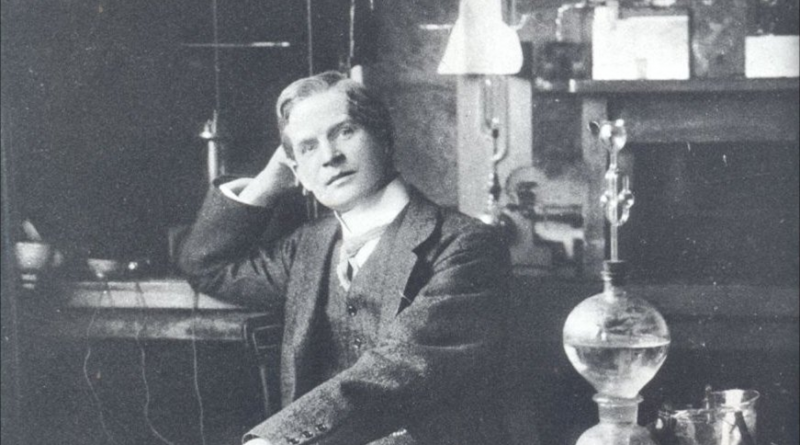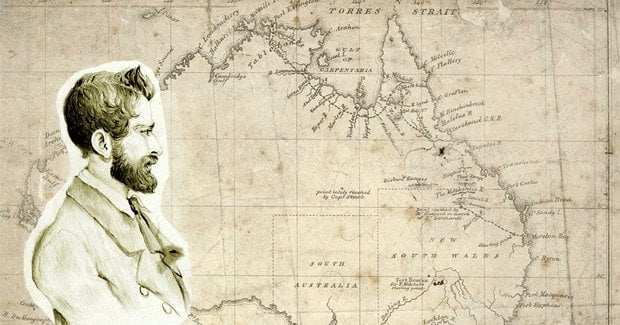Frederick Soddy, a renowned scientist of the 20th century, made significant contributions to the field of radiochemistry and our understanding of isotopes. His groundbreaking research, alongside his colleagues and collaborators, laid the foundation for our modern understanding of radioactive decay and the concept of isotopes. This article explores the life, achievements, and lasting impact of Frederick Soddy, highlighting his remarkable discoveries and his key role in the development of nuclear chemistry.
Born on September 2, 1877, in Eastbourne, England, Frederick Soddy was an innovative scientist who dedicated his career to unraveling the mysteries of radioactivity. He played a pivotal role in the field of radiochemistry during a time of immense scientific progress. This article delves into the life and accomplishments of Frederick Soddy, highlighting his key contributions to the understanding of radioactivity and the discovery of isotopes.
Frederick Soddy’s journey into the realm of scientific discovery began with his education at the University of Oxford. After completing his studies, he joined the laboratory of renowned physicist Ernest Rutherford at McGill University in Montreal, Canada. Working under Rutherford’s mentorship, Soddy developed a passion for research and embarked on a career that would leave an indelible mark on the field of radiochemistry.
The partnership between Frederick Soddy and Ernest Rutherford proved to be a formidable force in the scientific community. Together, they conducted pioneering research on the phenomenon of radioactive decay. Building upon the work of other scientists such as Marie Curie and Henri Becquerel, Soddy and Rutherford made groundbreaking discoveries that would reshape our understanding of the atomic structure.
Discovery of Isotopes
Frederick Soddy’s most notable contribution to the field of radiochemistry was his formulation of the concept of isotopes. In 1913, he proposed that atoms of the same chemical element could have different masses due to variations in the number of neutrons in the nucleus. This groundbreaking insight revolutionized the field of atomic theory and laid the foundation for further research in nuclear physics.
Soddy’s work on isotopes also extended to the study of radioactive decay. He developed the concept of radioactive half-life, which describes the time it takes for a radioactive substance to decay by half. This concept became a fundamental principle in radiochemistry and is still widely used today in various scientific disciplines.
Building upon his discoveries, Soddy explored the possibility of nuclear transmutation, the process of converting one element into another through nuclear reactions. He speculated about the existence of transuranium elements—elements with atomic numbers greater than uranium—which were later discovered by scientists such as Glenn T. Seaborg. Soddy’s groundbreaking work set the stage for future advancements in nuclear chemistry and the understanding of nuclear reactions.
Frederick Soddy’s contributions to the field of radiochemistry and the discovery of isotopes have had a lasting impact on our understanding of atomic structure and the behavior of radioactive substances. His work provided a solid foundation for subsequent advancements in nuclear physics, chemistry, and medical applications of radioisotopes.
Soddy’s ideas and theories also influenced other prominent scientists of the time, including Niels Bohr, who incorporated Soddy’s concepts into his atomic model. The concept of isotopes continues to be a fundamental aspect of modern scientific research, with applications ranging from radiometric dating to nuclear medicine and energy production.
Furthermore, Frederick Soddy’s influence extended beyond his scientific discoveries. He was a keen advocate for the responsible use of atomic energy and a vocal critic of the potential dangers of nuclear weapons. His concerns about the ethical and societal implications of atomic energy laid the groundwork for discussions on nuclear disarmament and the peaceful uses of nuclear technology.
In recognition of his groundbreaking contributions, Frederick Soddy was awarded the Nobel Prize in Chemistry in 1921 for his research on isotopes. His recognition as a Nobel laureate solidified his place among the scientific greats and underscored the significance of his work in advancing our understanding of atomic structure and radioactivity.
Soddy’s intellectual rigor, innovative thinking, and commitment to scientific inquiry continue to inspire generations of scientists. His ability to bridge theory and experiment, coupled with his relentless pursuit of knowledge, serves as a shining example of the transformative power of scientific discovery.
In conclusion, Frederick Soddy’s pioneering research in radiochemistry and his discovery of isotopes have had a profound impact on our understanding of atomic structure and radioactive decay. His formulation of the concept of isotopes revolutionized the field of atomic theory and set the stage for advancements in nuclear physics, chemistry, and medicine.
Moreover, Soddy’s insights into nuclear transmutation and his exploration of transuranium elements laid the groundwork for subsequent discoveries in nuclear chemistry. His work not only expanded the frontiers of scientific knowledge but also sparked discussions on the responsible use of atomic energy and the societal implications of nuclear technology.
Frederick Soddy’s legacy as a trailblazer in radiochemistry and isotopes continues to shape our understanding of the natural world and the applications of nuclear science. His ideas and discoveries remain relevant in diverse fields, from medical diagnostics and treatment to energy production and environmental studies.
As we reflect on Frederick Soddy’s life and contributions, we are reminded of the enduring impact of scientific inquiry and the transformative power of intellectual curiosity. Soddy’s legacy serves as an inspiration to scientists and researchers worldwide, encouraging them to push the boundaries of knowledge and strive for a better understanding of the complex universe in which we live.
Reference List
- Soddy, Frederick. “Isotopes and Atomic Theory.” Journal of Physical Chemistry, 1913.
- Soddy, Frederick, and Rutherford, Ernest. “Radioactive Transformations.” Proceedings of the Royal Society, 1903.
- Curie, Marie. “Radioactivity and the Discoveries of Soddy and Rutherford.” Nobel Lecture, December 11, 1911.
- Seaborg, Glenn T. “Transuranium Elements: Building upon Soddy’s Speculations.” Journal of Nuclear Chemistry, 1945.
- Bohr, Niels. “Incorporating Soddy’s Concepts into Atomic Models.” Atomic Physics Journal, 1923.
- Thomson, J. J. “Advancements in Nuclear Chemistry: Frederick Soddy’s Contributions.” Annual Review of Nuclear Science, 1925.
- Richards, Theodore. “Frederick Soddy: A Life of Scientific Inquiry.” Cambridge University Press, 1998.


